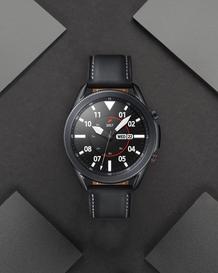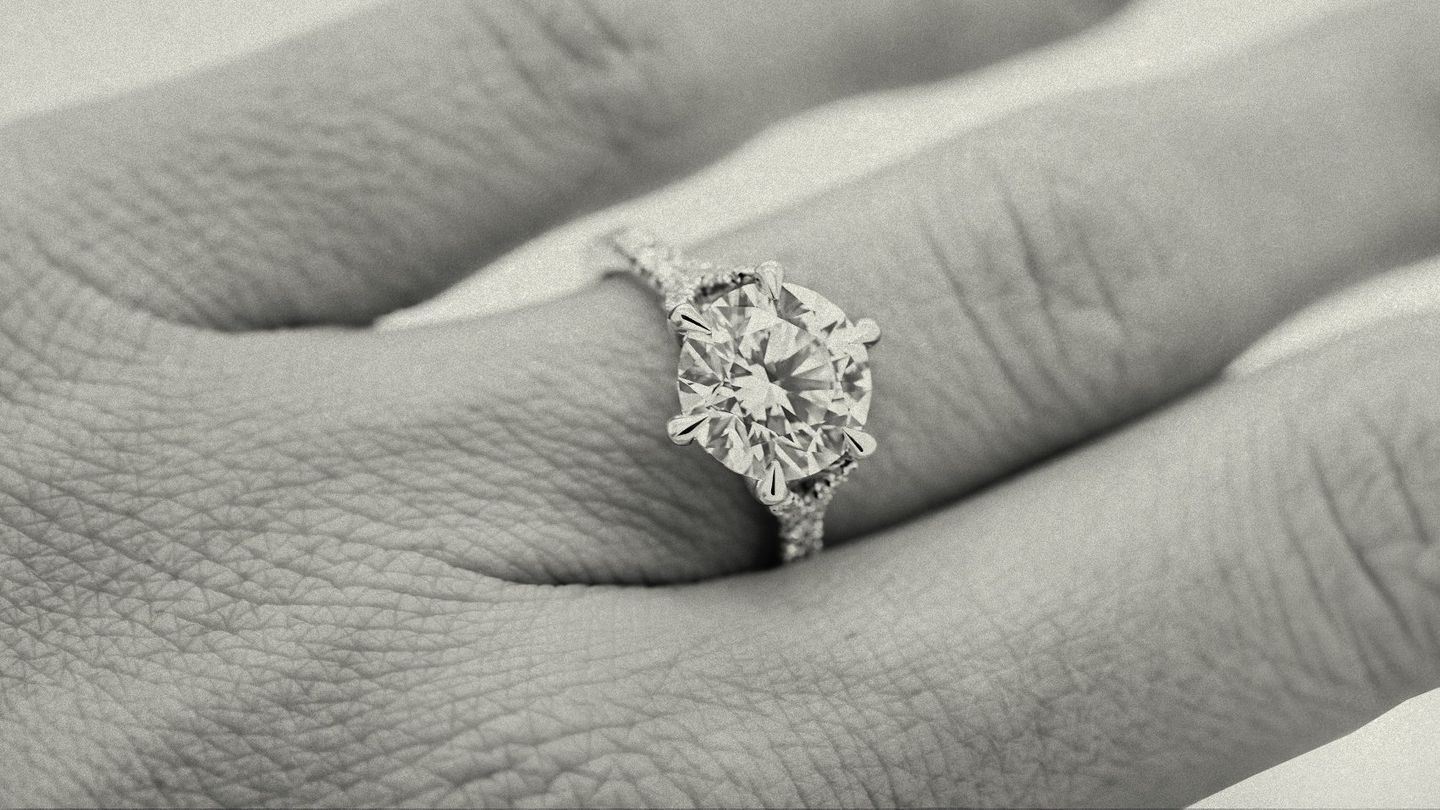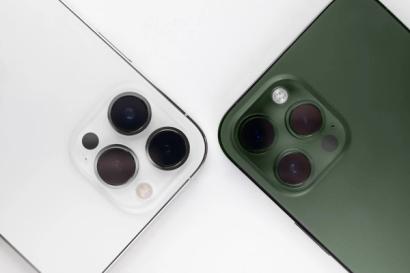

How to Choose an Engagement Ring Without Looking Like an Amateur
Choosing an engagement ring is not about sparkle alone. It is a quiet study in proportion, craftsmanship, and restraint, where intuition matters as much as taste.
- Words: Gentleman's Journal
There are few purchases that make a man feel so suddenly mortal as the engagement ring. Cars, watches, even property can be traded, upgraded, quietly replaced. But this? This is the one decision that will gleam back at you across the breakfast table for decades, wordlessly reminding you of the day you either rose to the occasion or fumbled it entirely.
An engagement ring, I’ve realised, is less an object than a confession. It says how you see your partner, how you imagine the two of you, and, uncomfortably, what you think beauty costs. It is a pledge, a performance, and a tiny, shimmering résumé of your taste. Which is why even the most self-possessed men tend to approach it with the nerves of a debutant at his first ball.
I remember the first time I stood outside a Bond Street jeweller, pretending to check my phone while actually psyching myself up to go in. Behind the glass, the world was hushed and upholstered: soft carpets, darker suits, the faintest scent of polish and champagne. Inside, every movement was deliberate, as if even the air had been trained not to jostle the diamonds. One doesn’t browse in such places. One submits.
The assistant smiled the patient smile of someone who’s seen a hundred variations of me: men who desperately need to understand how to pick an engagement ring but would rather pretend they already do. I muttered something about “looking for something timeless” though I barely knew what to look for in an engagement ring. Everything in the room was timeless. That was the point.
Learning How To Choose An Engagement Ring
Still, there’s a strange romance in ignorance. You begin to learn the old vocabulary of stones, the engagement ring 4Cs, as they’re reverently called, and with it the realisation that diamonds are judged much like people at a good London dinner party: by cut, colour, clarity and carat. The rest is merely conversation.
Decoding the Four Cs: Cut, Colour, Clarity, Carat
The jewellery trade loves its mysteries. It has its own secret language, “the Four Cs,” they call them: Cut, Colour, Clarity and Carat. The first time you hear that, you’ll nod earnestly, pretending you understand, while quietly Googling under the counter.
Cut, though, is the one that matters. It’s what separates sparkle from surrender. A well-cut stone behaves like good conversation at a Mayfair dinner: bright, sharp, and impossible to ignore. A poorly cut one just sits there, dull and unengaged, like someone recounting their mileage to the Cotswolds. Always choose an “Excellent” or “Very Good” cut; anything less, and you’re merely funding mediocrity.
Colour follows, and this is where the industry’s snobbery comes into play. The purest stones are graded D, descending down to Z, at which point they begin to resemble the water in a London taxi vase. The smart money sits around G or H, near colourless, indistinguishable from perfection unless your fiancée carries a jeweller’s loupe in her handbag (in which case, reconsider everything).
Clarity is equally misunderstood. Yes, flawless stones exist: rare, pristine, and priced accordingly. But the honest truth? No one can tell. Not your friends, not your future mother-in-law, not even the photographer at the engagement party. VS2 or SI1 are the marks of a sensible man who invests in discretion, not delusion.
And then there’s Carat, the most glamorous way to measure weight since the 1970s. One carat equals 200 milligrams, which sounds small until you see the price tag. The thing they don’t tell you is that diamond prices don’t rise politely with size; they surge dramatically, like a politician’s expenses claim. Two carats don’t cost twice as much as one. They cost roughly the GDP of a small island nation. Choose accordingly.
Of course, none of this knowledge makes you feel less of a fool when confronted with the glittering reality. You nod, you peer, you murmur intelligent-sounding things like “Yes, that’s rather lively,” while hoping nobody asks you to define your terms. But somewhere between the velvet trays and the white gloves, comprehension dawns: the ring isn’t about quantity. It’s about calibration. Like a perfect martini, it’s an exercise in restraint.
Shape & Character: Understanding the Diamond Silhouette
The shape, too, becomes a personality test. A round stone suggests a belief in the classics, a sort of Savile Row correctness. An emerald cut, with its clean geometry and art-deco poise, speaks of architectural certainty, a choice for someone who prefers understatement to sparkle. These are the quiet differences that define engagement ring styles.
The oval has an easy modernity, like linen in summer; the pear is theatrical, designed to be noticed from across the table. Choosing between them is less about taste than anthropology: who is she, really, when all the music stops?
And then there is the setting, the architecture that holds the whole idea together. The solitaire, that most elegant of constructions, says: I trust the stone to speak for itself. The halo, by contrast, surrounds its centre with an audience of admirers. Neither is wrong; both tell a story. The trick is knowing which story you’re in.
Metal Matters: Platinum, Gold and Subtle Distinction
Choosing the band is where your inner metallurgist awakens. This is the moment you encounter the world of engagement ring metal types. Platinum is the undisputed aristocrat: bright, dense, impervious to time. It is the choice for those who like their luxury to be both silent and permanent. White gold imitates it with enthusiasm but needs the occasional spa treatment to keep up appearances. Yellow gold, on the other hand, has a warmth that feels reassuringly traditional, the kind of metal that belongs in family portraits and on people who own dogs named after dukes.
Rose gold, used judiciously, has its own charm: romantic without slipping into sentimentality. Yet one must be honest with oneself. Are you choosing rose gold because it is genuinely beautiful, or because it photographs well on social media?
If all this sounds exhausting, it is because it is. The entire process is a delicate duel between sincerity and performance, love and logistics. One minute you are talking metaphysics, the next you are negotiating millimetres. Somewhere in the middle, you realise that what you are really doing is trying to translate a feeling into an object, a wildly impossible act of craftsmanship.
Espionage & Sizing: The Covert Side of “How to Choose an Engagement Ring”
Most men resort to espionage at this point. We become amateur detectives, noting off-hand remarks, inspecting existing jewellery under the pretext of tidying, even roping in friends for reconnaissance missions. The truly committed will attempt the delicate art of measuring a woman's ring size without waking her, though jewellers offer rather more civilised alternatives. There are whispered phone calls, coded text messages, elaborate decoys. For a brief, ridiculous period of your life, you operate like a secret agent in a rom-com written by Graham Greene.
Yet for all the panic and posturing, there is an undeniable pleasure in the learning. You start to understand why the jewellers speak softly, why each stone is presented as though it might answer back. The process has its own rhythm: a kind of secular ritual, complete with its priests, its relics, and its tiny moments of revelation.
What surprised me most, though, was how intimate the experience becomes. Amid the glare of display lights and the soft diplomacy of salesmanship, there’s an almost disarming stillness. You’re forced to picture your partner’s hand, its shape, its gestures, the way it moves through the world. You imagine how the light will catch as she lifts a glass, or how it will rest against her hair. And suddenly, all the technical jargon falls away. It’s not about perfection; it’s about recognition.
The Practical Poetry of It All
If the engagement ring is a symbol, it is also an artefact of astonishing practicality. The best ones are designed for real life: to withstand champagne corks, glove compartments, and the occasional misguided attempt at DIY. Jewellers speak of “wearability” with the seriousness of engineers, and rightly so. Romance may be eternal, but laundry and travel are weekly occurrences.
That is why craftsmanship matters. The great houses, and the discreet ateliers tucked behind them, treat structure as reverently as sparkle. They will talk you through engagement ring settings, claw angles, and band curvature, terms that sound abstract until you understand they determine whether a ring will sit gracefully for forty years or start snagging jumpers by Tuesday. It is a reminder that beauty, in its highest form, is always an alliance between art and engineering.
There is etiquette, too, in the presentation. The ring box should open without struggle; the hinge, like the proposal itself, must work on the first attempt. There is an unspoken rule that the interior be dark: navy, charcoal, or midnight velvet, so the diamond performs its first trick in shadow. Flashy packaging betrays insecurity, while understatement, as ever, is the truest luxury.
Provenance, Ethics & Enduring Value
The modern gentleman cannot ignore where things come from. Provenance has become the new poetry of possession. To know that a stone was cut by hand in Antwerp, or sourced through traceable channels, is to speak the language of discernment rather than display. In an age where everything can be faked, authenticity has become the most exclusive commodity of all, and it is here that the idea of ethical engagement rings quietly enters the conversation.
Equally, there is a quiet nobility in inheritance. Some choose antique pieces not merely for sentiment but for sustainability, the notion that beauty already exists and only needs rediscovery. A vintage ring carries its own patina of stories, a sense of continuity that makes the gesture of giving it all the more profound.
Still, new or old, mined or reimagined, the essential thing is understanding that a diamond, properly chosen, is less an emblem of wealth than of endurance. It is, quite literally, time made visible.
Aftermath & Reflection
In the days that follow, the ring becomes a small social event of its own. Friends lean in to examine, to admire, to ask where you found it. People you barely know suddenly have opinions on the Four Cs. You smile, offer the briefest of answers, and learn the art of graceful understatement. The truth is, you’re rather proud, not of the money spent, but of having navigated the whole delicate ordeal without catastrophe.
Occasionally, when she isn’t looking, you’ll catch yourself glancing at the ring. Not in vanity, but in quiet disbelief. That little shimmer represents so many conversations unsaid: the plans, the compromises, the growing up you didn’t quite realise you’d done.
It will gather its own patina of memories soon enough: the first dinner as fiancés, the weekend away, the inevitable photograph under too much restaurant lighting. And years later, perhaps, it will be offered again, in another setting, to another generation, a silent loop of continuity, glittering softly in candlelight.
The Gentleman’s Rule: Your Guide to How to Choose an Engagement Ring
Choosing an engagement ring, I’ve come to think, isn’t a matter of expertise at all. It’s a test of intuition. You can memorise every grading scale and still miss the point. The right ring doesn’t announce its worth; it simply feels inevitable, as though it’s been waiting to belong.
When you find it, you’ll know. You’ll see it, and for a moment the world will go still. All the charts and categories will dissolve, leaving only the quiet recognition that this particular arrangement of light and metal is the beginning of something permanent.
And that, surely, is the goal: to make a choice that feels effortless, inevitable, and entirely yours.
Because in the end, the true art of buying an engagement ring is not in pretending to be an expert. It’s in behaving like a gentleman who already knows what matters.


